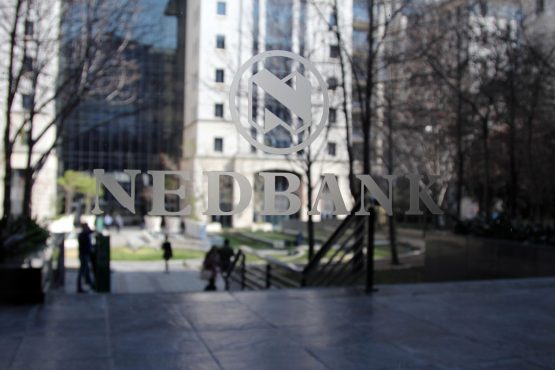Nedbank has cut 1 in 4 branches and 16% of staff since 2015

Nedbank has cut a quarter of its branches (25%), or 140 outlets, since 2015. This has meant a reduction in the floor space occupied by branches of 22% since that point, with a cumulative 69 586m2 saved since 2014.
To offset the branch closures, it continues to grow its in-store footprint chiefly with partner Boxer. It now has 120 of these smaller points-of-presence within supermarkets, up 28% since 2015.
So far this year, it has closed six branches and seven in-retailer outlets and opened no new branches.
It says this reduction has not affected its “coverage of the bankable population in SA, which remains around 85%, in line with that of the industry”.
The banking group says “by the end of 2025, 57% of branches will be smaller than 200m2, which is a significant shift from our current mix of branches”. The actual number of branches is not likely to move meaningfully from the current level, which is close to its target. One can therefore expect the overall floor space to reduce rapidly in the next two years. The number of Nedbank outlets within retail partners is expected to grow materially in the coming years.
It says shifts in client behaviour and preferences that were fast-tracked by Covid-19, as well as digitisation of services, enabled it to reduce branch teller transactions – in other words, any cash-related transaction performed over the counter – by 65% since January 2019. Nedbank says “altogether, 90% of client cash deposits at branches are now being processed through cash-accepting ATM devices”. Overall teller activity is down by an even greater amount (67%) since the first half of 2019.
The push to self-service has been reliant on the delivery of its Managed Evolution IT programme, which it says is 89% complete. It has invested R10 billion in new systems to date. Now, 60% of personal loans and 52% of credit card sales are done digitally, with 40% or less reliant on the branch channel. It expects a greater portion of staff within branches and its partner retail outlets to be focused on sales over time.
The bulk – nearly 3 000 staff – were cut since 2019 (representing a 10% decrease). In the past year, it says the decline in permanent employees was mainly through natural attrition.
These efforts across its retail and business banking (RBB) unit, together with higher revenue, has seen the cost-to-income ratio improve to 62.4% (from over 65% last year). Overall, its cost-to-income for the first six months was at 56.2%, a number it has targeted to get below 54% by 2023. Longer term, it sees this below 50% for the group.
Head office cuts
It isn’t only optimising its retail branch network. Over the past four years, it has cut the number of campus sites (offices) from 31 to 24. It has a longer-term target of 19. Since 2016, it has saved over 122 000m2 of office space.
It says it will “continue to optimise the portfolio by enhancing workstation use through enabling flexible office constructs to support more dynamic ways of work, as well as leveraging successful work-from-home experiences as a result of Covid-19, while creating further value and cost reduction opportunities”.
“Our optimal workplace distribution mix is expected to settle at around 60% at Nedbank premises and at 40% as a mix of hybrid and permanent work-from-home models to support an anticipated workforce distribution model of 50% full-time on premises, 30% hybrid and 20% permanently off-site.”
It says occupancy-related costs are down 5% year on year.
Africa earnings boost
Nedbank reported a 27% increase in headline earnings for the first six months of 2022, with growth being driven by a strong turnaround in its Nedbank Africa Regions business (which saw earnings up over 200% to R574 million).
Growth in earnings from the RBB and corporate and investment banking (CIB) units was more muted, up 9% and 10% respectively. Together, these two units comprise 83% of profits.
Net interest income increased by 9%, while non-interest revenue was up 13%. Its revised guidance indicates it expects a slowdown, with the former targeted to grow by low single digits for the full year, and the latter by high single digits. Expenses grew by 7% in the first half.
The group’s impairment charge increased by 3%, with its credit loss ratio flat at 85 basis points (bps).
The credit loss ratios for RBB and CIB (1.52% and 0.2%) are within its the cycle ranges.
The bank highlights that interest rates are still 100bps (one percentage point) lower than at the end of 2019 and that “households’ debt servicing cost-to-income ratio [is] at a 16-year low”. This supports “demand for prime-linked credit” and “easier cash flow for households, businesses and corporates to service their debt”.
The bank says inflation is expected to peak in Q3 at around 7.8% and average 6.8% for 2022.

